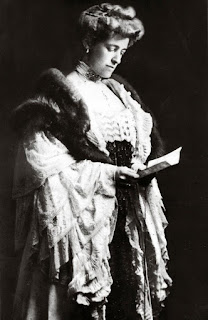 |
| Paperback cover of The Short Stories of F. Scott Fitzgerald: A New Collection, edited by Matthew J. Bruccoli, 1989. (Photo by Mark C. Taylor) |
 |
| F. Scott Fitzgerald at his desk, 1920's. |
F. Scott Fitzgerald is best known today for his novels The Great Gatsby and Tender Is the Night, but he was also a prolific short story writer, publishing around 160 short stories. Only 45 of those stories were collected in books during Fitzgerald’s lifetime. The Short Stories of F. Scott Fitzgerald: A New Collection, edited by Fitzgerald scholar Matthew J. Bruccoli, and first published in 1989, attempted to put together a definitive collection of Fitzgerald’s best short stories.
The Short Stories of F. Scott Fitzgerald essentially
replaced the 1951 collection The Stories of F. Scott Fitzgerald. The
1989 collection has the advantage of length: it contains 43 stories, compared
to 28 in the 1951 collection. One can always quibble with an editor’s
selections, but Bruccoli did a fantastic job of collecting Fitzgerald’s most
important stories, while also highlighting the breadth and scope of Fitzgerald’s
short stories.
Fitzgerald’s stories show the optimism and disillusion of
one man, emblematic of his generation. Fitzgerald’s life was a touchstone for
many of the momentous events of his lifetime. Born in 1896, just before the
dawn of the American century, Fitzgerald served in World War I, (although he didn’t
see combat) spent a good chunk of the 1920’s in Paris and made his first foray
to Hollywood just as silent pictures were ending. His wife Zelda’s mental health
collapsed just months after the stock market crash. Fitzgerald’s stories of the
1930’s often took a darker tone as his alcoholism worsened and his cynicism
deepened.
Fitzgerald writes so movingly of loss, and the yearning for
the past. The last three paragraphs of “The Last of the Belles” are a beautiful
example of his evocative style. In the story, the narrator is searching for the
Army camp where he was stationed a decade earlier during World War I, but he
can find no trace of it:
“I tried to sight on a vaguely familiar clump of trees, but
it was growing darker now and I couldn’t be quite sure they were the right
trees…No. Upon consideration they didn’t look like the right trees. All I could
be sure of was this place that had once been so full of life and effort was
gone, as if it had never existed, and that in another month Ailie would be
gone, and the South would be empty for me forever.” (p.463)
Fitzgerald’s main themes of love, class, and money
reverberate through many of his stories, but in this collection the reader can get
a sense of Fitzgerald’s range as an author. Yes, he wrote about beautiful, privileged
people searching for love, but he wrote about many other things too. Fitzgerald’s
sense of humor is on display in “The Jelly-Bean,” “The Diamond as Big as the
Ritz,” “Financing Finnegan” and the Pat Hobby story “’Boil Some Water—Lots of
It.’” He examines the South in “The Last of the Belles,” “The Jelly-Bean,” and “The
Ice Palace.” There are short stories about Catholicism, (“Absolution”) college
football, (“The Bowl”) and Hollywood (“Crazy Sunday,” “Last Kiss”).
Fitzgerald would be so proud if he could hold this
collection of his short stories in his hands. It’s 775 pages of his best
writing, a summation of more than 20 years as a professional author. Fitzgerald
sweated over these stories, working hard to capture his times on paper. He was
a writer blessed with a remarkable gift: the ability to write perceptively
about his own time, yet his writing transcends his own time as his words echo
down the generations to us all these years later. In every story, no matter how
contrived the plots may sometimes be, there are sentences and phrases that will
take your breath away and will remind you of the power and beauty of the written
word.
Some of my own favorite stories in this volume are:
“The Ice Palace”
“May Day”
“The Diamond as Big as the Ritz”
“Winter Dreams”
“The Sensible Thing”
“The Last of the Belles”
“The Swimmers”
“Babylon Revisited”
“Crazy Sunday”
“Afternoon of an Author”





